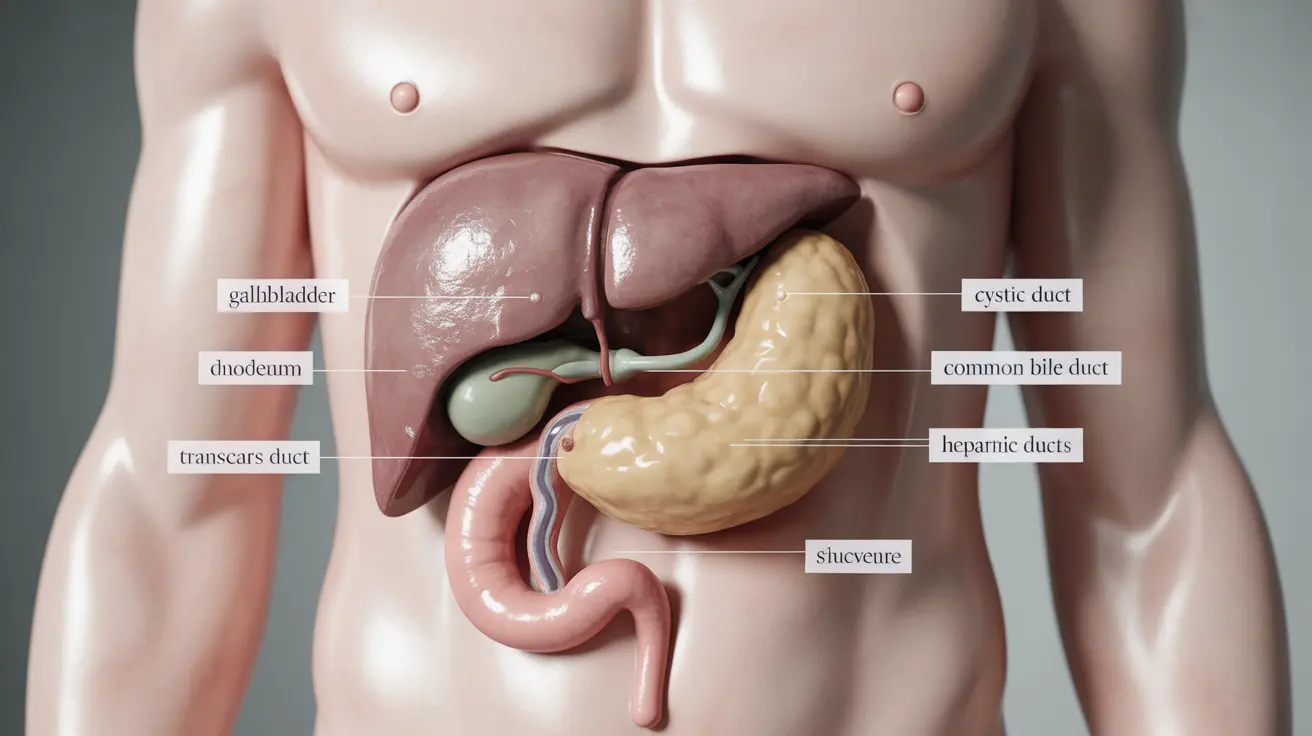The gallbladder's location in the human body plays a crucial role in its function as part of the digestive system. Understanding where this small but important organ sits can help you better recognize potential problems and communicate effectively with healthcare providers about any concerns.
This comprehensive guide will explore the gallbladder's precise location, its relationship with surrounding organs, and how its positioning affects its vital role in digestion.
Anatomical Position of the Gallbladder
The gallbladder is located in the upper right quadrant of the abdomen, specifically underneath the liver. It sits in a small depression on the liver's undersurface, between the right and left lobes. This pear-shaped organ is approximately 3-4 inches long and 1-2 inches wide in adults.
Specific Landmarks
To understand the gallbladder's location more precisely, it can be found:
- Between the 4th and 9th ribs on the right side
- Just below the liver's right lobe
- Above the transverse colon
- Behind the lower portion of the right ribcage
The Biliary System Connection
The gallbladder's location is strategically connected to other digestive organs through a network of ducts called the biliary system. This includes:
- The cystic duct, which connects directly to the gallbladder
- The common bile duct, which leads to the small intestine
- The hepatic ducts, which connect to the liver
Surrounding Anatomical Structures
Several important organs and structures surround the gallbladder:
- Liver (directly above)
- Duodenum (first part of the small intestine)
- Pancreas (posterior to the gallbladder)
- Transverse colon (below)
- Portal vein and hepatic artery (nearby blood vessels)
Clinical Significance of Gallbladder Position
The gallbladder's location can affect how symptoms present during various conditions. Pain and discomfort typically manifest in the upper right abdomen, but may also refer to other areas due to shared nerve pathways. Understanding these patterns helps in accurate diagnosis of gallbladder issues.
Frequently Asked Questions
Where exactly is the gallbladder located in the human body?
The gallbladder is located in the upper right portion of the abdomen, tucked underneath the liver between its right and left lobes. It sits between the 4th and 9th ribs on the right side of the body.
What role does the gallbladder play in digestion and bile storage?
The gallbladder stores and concentrates bile produced by the liver, releasing it when needed to help break down fats during digestion. Its location allows it to efficiently deliver bile to the small intestine through the common bile duct.
How can I feel if there is a problem with my gallbladder based on its location?
Gallbladder problems typically cause pain or discomfort in the upper right abdomen, just below the rib cage. This pain may radiate to the right shoulder blade or back. The pain often occurs after eating fatty meals.
What organs are near the gallbladder that might cause related pain or symptoms?
The liver, pancreas, duodenum, and transverse colon are all located near the gallbladder. Because of this proximity, conditions affecting these organs can sometimes mimic gallbladder pain or cause related symptoms.
How does the gallbladder connect to the liver and intestines through the biliary tract?
The gallbladder connects to the liver and intestines through a series of ducts: the cystic duct connects the gallbladder to the common bile duct, which then joins with the pancreatic duct before emptying into the duodenum of the small intestine.




